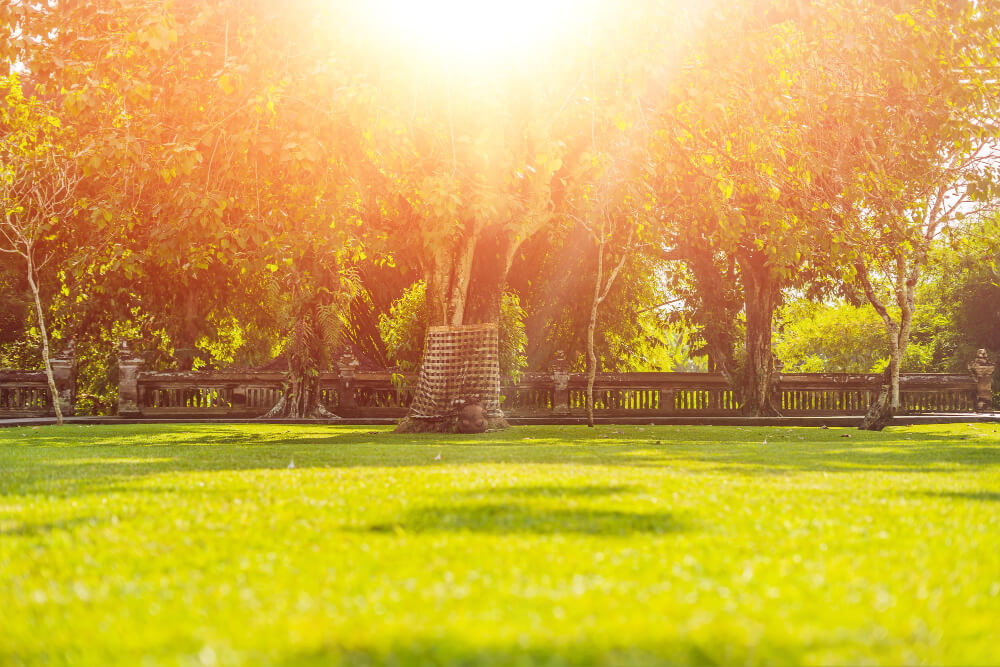For most places, summer is becoming longer and hotter. Due to climate change, temperatures in the late spring and early fall are more commonly seen in mid-summer. This increase in temperature has put additional stress on our lawns over the summer months and has required us to put a real emphasis on proper maintenance practices during those periods of high plant stress. In simpler terms: during those hot months, you have to pay extra attention to watering and cutting your lawn properly.
Watering your lawn
Watering properly is vital to conditioning your lawn for long periods of additional stress, such as a record high temperature during the summer. You must pay attention to the frequency and volume when determining your watering schedule. You must water your lawn two to three times a week for one hour each cycle. This has a much more positive impact on the root depth than watering every day for twenty minutes or so. Greater root depth is super important because the lawn will have the proper access to moisture, oxygen, and nutrients down in the soil when it really needs it.
If you don’t have a proper irrigation system, an oscillating sprinkler attached to your hose is very effective and allows for even coverage versus watering by hand.
Cutting your lawn
Cutting your lawn properly during very high periods of temperature stress will make all the difference in keeping both color and plant health up to snuff. Raise your mowing height to three inches when you find temperatures rising above 25 degrees. Increasing your mowing height will have a direct impact in terms of increasing root depth. Ensure your mower blade is as sharp as possible, too – this will allow for a clean cutting of the leaf blade as opposed to shredding with a dull, clunky blade. Shredding the leaf blades will put added stress on your lawn during a stressful period when it requires all the help it can get. Cutting at least once a week will ensure you don’t remove any more than one-third of the leaf blade at a time, which is essential. This is very important for you to follow. Removing more than one-third of your lawn’s top growth at a time is considered scalping and could possibly cause the lawn to brown out completely. Following these cultural practices will help keep your lawn as green as possible during the hot summer season, while also increasing your lawn’s ability to provide a much-needed cooling effect to your personal living environment.
These are just some of the top tips for keeping your lawn spick, span, and most importantly – protected from the hot summer months. If you aren’t sure where to get started, talk to a turf specialist or continue to explore my blog. I have some great information that could help you keep your lawn looking its absolute best.
